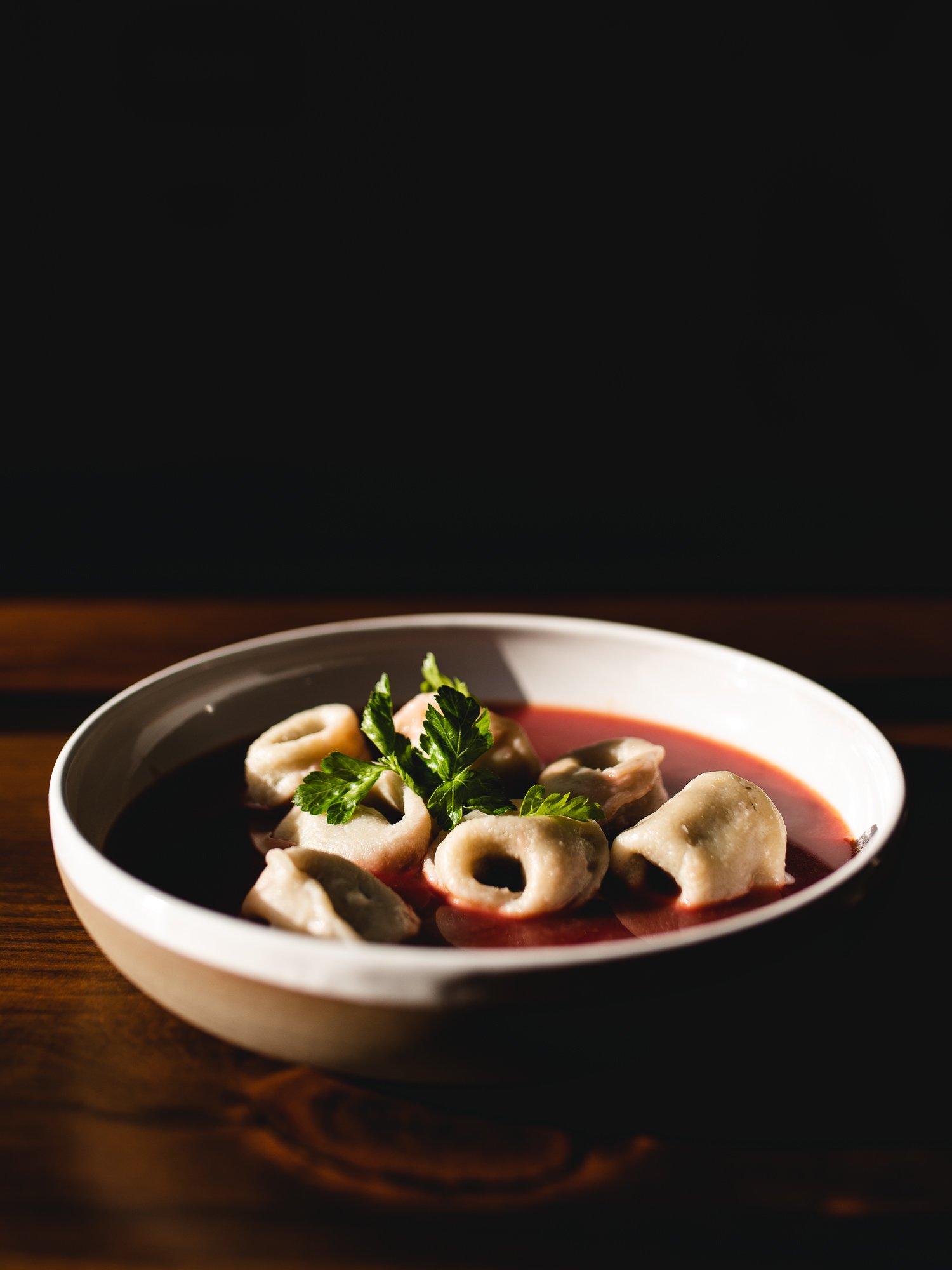A BORSCHT BY ANY OTHER NAME (WOULD BE AS SOUR)
It was Christmas Eve and I was texting with my friend Kaitlin, whose family is Polish. She was telling me about how her mom was about to serve uska, small pierogis folded in the shape of little ears, stuffed with wild mushrooms and cabbage. Instead of a thick beet purée like the borscht I know, the one that her mom serves is a long-simmered mix of beets, beef broth, cabbage, and other root veg. “Use a shitload of beets, and make sure you boil it twice,” she instructed, referring to a method that concentrates a maximum of flavour to produce an inky broth in which the uska are placed.
Borscht originated somewhere between 400 - 800 AD in Ukraine as a fermented vat of cow parsnip, and it wasn’t until the mid-1600s that beets were introduced. Borscht is a tradition throughout Eastern Europe and Russia, but its ownership and recipes are contested, reflecting how food is politics, a way to assert and reclaim power, even up to present day as tension continues to mount between Ukraine and Russia.
The popularity of borscht in North America is credited to Ashkenazi Jews who brought it over when fleeing persecution in the 1900s, and the current spelling with a t seems to reflect this Yiddish iteration. According to Jewish food historian Kat Romanow, this soup is part of the tradition of eating zoyers or sour things like pickles, to “offset the bland starches that were staples of the Eastern European diet.”
HOT TIP: Check out the website of the Wandering Chew, where they have recipes for different kinds of borscht in the Jewish tradition.
If the history of borscht is power struggle and survival, a common thread with the borscht of today is the push and pull between the sweetness of beets and a souring agent. In some traditions, the bubbly juice from fermented rye bread called kvass is used. Kat explained that in Jewish cuisine, it’s a beet pickling liquid called rosl, or sour cream, which both thickens the soup and adds tartness. To keep it kosher, a vegetarian broth is used instead of beef, to allow for the addition of dairy, which is always added at the table instead of directly into the pot.
Lemons are also used, as with the family of Zev Moses, director of the Museum of Jewish Montreal. His bubbe actually makes borscht that is more like a cabbage and tomato stew, with brown sugar, lemon, and sometimes but not always, a roasted beet. Long before his family moved to North America, some of them lived in Southern Ukraine. This area is south of what he explained to me is a fascinating “tomato-potato line,” essentially a division of Europe to southern, sunny places where tomatoes could grow, and northern, colder places that would have to rely on potatoes. For me, this immediately brought to mind the tomato borschts of Hong Kong diners (originating from what the internet tells me is from an enclave of Russian immigrants in Shanghai). When Zev is behind the stove making borscht though, his version is all about dark hues: red cabbage, beets, and of course, lots of lemon.
Back in my Montréal apartment, I think about how borscht means different things to different people. Starting from a fermented root vegetable mixture, there are now many versions, some beet-forward, others with tomatoes. Some are brothy, others are a thick purée, and borscht can be served hot or cold. Its simple ingredients can make borscht the food of survival, yet it can also be the food of celebration, where good ingredients shine through.
Like language, it lives and breathes and as we write down the recipes of our families and friends, we make way for the versions that are already emerging. In the past two weeks, I’ve made a puréed borscht with toasted caraway seeds, served with a dollop of yogurt. And to anchor within my mind the plurality of borscht, I also made a version with uska from the Polish deli in my neighbourhood, ladling a rich purple broth around it. With the subzero temperatures and snowy landscape outside, it was just like Christmas.

